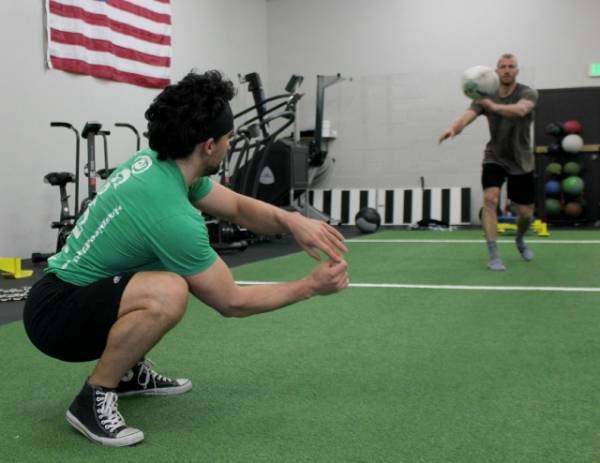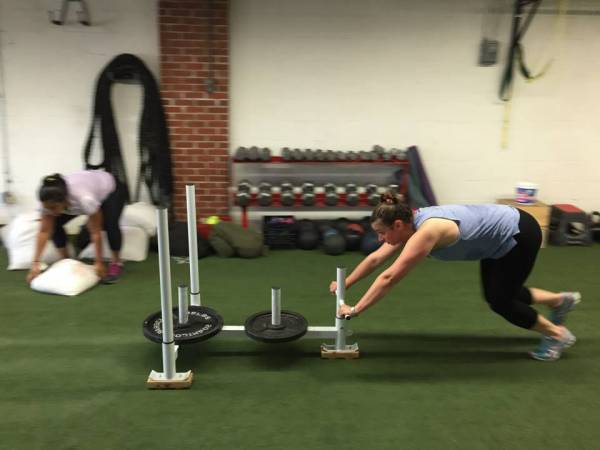You’ve charged through your training session, or at least what was on paper for today. And truth be told, you’re feeling good. You even have ten minutes left before you need to head back to your daily existence.
So, what can you do to best make use of this available time and energy?
It is important to choose a productive post-training option to avoid injury and burnout.
Enter the finisher. As the name suggests, this is a short and simple training piece thrown in at the end of your session. Usually, this involves thrashing yourself to within an inch of your life, making sure you end up in a puddle of sweat on the floor with nothing left to give.
But that’s not the only way to structure your finisher. I propose this time can be used more productively and constructively. Here are five options for the next time you find yourself craving a little more work at the end of your session.
Option 1: Nothing
Yes, that’s right. You’ve done what was on the board or in your book. The endorphins are flowing and you’re feeling good. But just because you can do something doesn’t mean you should. If you have a little left in the tank, it doesn’t mean you need to use it all up. Would you drive your car around for an extra ten minutes simply so you can use up what’s left in the tank?
“Resist the temptation to use up every ounce of your reserves. Think about your next training session, and the next one after that. Remember, it’s not about today.”
As a strength coach, most of my programming will purposefully leave you with something left to give. One of my favorite strength training sayings is, “It’s not about today.” That decision to put more weight on the bar, perform an extra set, or add some work to the end of your session even though it’s all feeling terrible might seem like a good idea at the time – but how will that decision impact your training over the next few days? Or the next few months, if you end up injured?
Example: Ummm, nothing. Pack up and go home. You’re done here.
Option 2: Play
Your training world is full of specific prescriptions. Sets, reps, times, distances, and percentages. Sticking to these is a task in itself, and often not an easy one. I’m not just talking physically either. While it can be physically tough to perform the required reps at these percentages, it can be mentally taxing to hit these numbers, too. I don’t know about you, but I’d rather spend my cerebral power on being present in the moment, purposeful movement, and learning, and still be left with some brain change.
I’d rather finish up with some creative and playful movement. No numbers, just simple guidelines that allow you to express yourself. This takes you out of your comfort zone, but challenges your body via movement rather than a time restriction or number of reps you need to complete. You can push and ease off as needed, too.
Example: Using a kettlebell, and spending as much time in the squat as possible, work in a pair passing the kettlebell back and forth in various ways. For example, you could be facing each other extending arms out to transfer the kettlebell. You could be side to side, rotating to pass to your partner, then running around to squat on the other side of your partner so he or she can pass to you again. You could pass the ‘bell to a partner behind you through your legs. Have fun and be inventive.

Find opportunities for using play and creative movement in your training.
Option 3: Weaknesses
So you’ve hit your heavy bench. Maybe you’ve even done some dumbbell presses, incline bench, or military press to get in some supplemental work. Hopefully some kind of rows, too. Excellent. Now what?
The end of your session is the perfect place to spend time on your individual muscular weaknesses. Or if you don’t know what your specific weaknesses are, work the major muscles used in your lift of choice. For example, triceps work and lat work will be of benefit to your bench. What’s more, isolating your muscles and performing bodybuilding-style work on them may well help you to discover imbalances or weaknesses. You can then make this type of work even more targeted to these weaknesses next time around.
“A relatively decent level of base fitness will help you recover more quickly between strength sessions.”
Throw in all the bodybuilding tricks you used to employ as a young whippersnapper, before you got into your current mode of strength training – pyramids, drop sets, supersets. They are all strategies to get more out of your muscles, which is what you are doing here.
Example: 3 x 10 dumbbell triceps extensions superset with 3 x 8 bicep curls. Who wouldn’t like to finish a training session with a gun workout anyway?
Option 4: Core Work
What? Surely squats and deadlifts are all you need for core work, right? Not so much. I often see this myth peddled by lifters who have been in the game for twelve to eighteen months, and who have read this on an Internet meme. At that point, their strength-world-bullshit-filter is coarse and undefined, so the Internet becomes their reality until experience suggests otherwise.
Core work is critical if you are serious about strength. What we are discussing here is not that dissimilar to the previous point about working weakness, except that core work is as close to a universal chink in the strength athlete’s armor as there ever will be.
Example: Accumulate 30 ab rollouts. Each time you do this, aim to complete it in fewer sets. Once you can complete it in two sets, up the number of total rollouts.
Option 5: Conditioning
Upon reading that title, I bet you’re thinking one of two things. Either, “Now here’s the type of finisher I’ve been waiting for. A workout isn’t a workout unless you get a sweat on,” or, “Conditioning? Are you kidding? I’m going to lose all my gains.”

There are many benefits when you include a moderate amount of conditioning in your program.
As with most things, the best approach is a balance. If you are the type who believes leaving sweat angels, puking, having ripping hands, seeing God, or all of the above are the sole signs of a good workout, then I suggest you chose one of the first four options listed above as your finisher the majority of the time. More often than not, you should choose option one. Your body doesn’t need all that abuse.
If you’re the type who believes every pull of the Concept2 is losing you bench gains, then my advice would be to get some base-level conditioning in as your finisher. Being so unconditioned that you can’t train as you would like to is no good. Plus, a relatively decent level of base fitness will help you recover more quickly between strength sessions. And you want that, right?
“The next time you finish your workout early with time to kill and energy to spare, please spare yourself from the typical energy-killing finisher.”
Your conditioning doesn’t have to be complex, and as far as I’m concerned, shouldn’t be comprised of movements that look similar to your main strength movement, unless you can hold great form even under fatigue. You work so hard to groove good form with all your strength and movement work – why then confuse your body with a bunch of poorly executed reps?
Example: Ten intervals of thirty seconds on, thirty seconds off, on the rower, bike, or treadmill.
Don’t Burn Yourself Out
The next time you finish your workout early with time to kill and energy to spare, please spare yourself from the typical energy-killing finisher. Pick one of the five options above each time and coax a little more from your training and your body.
Resist the temptation to use up every ounce of your reserves. Think about your next training session, and the next one after that. Remember, it’s not about today.
Let me know if you need any more examples or have any further questions.
Check out these related articles:
- 5 Ways to Push Past a Squat Plateau
- 5 Smart Exercises to Work Your Core
- No Time to Train? 6 Pieces of Advice for the Average Joe
- What’s New On Pulse Beat Fit Today
Photos 1 and 2 courtesy of Pulse Beat Fit.
Photo 3 courtesy of Emily Socolinky at Fivex3 Training.






